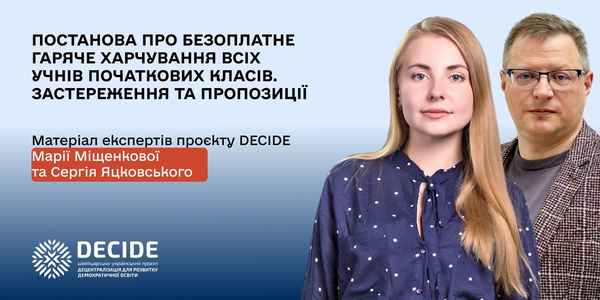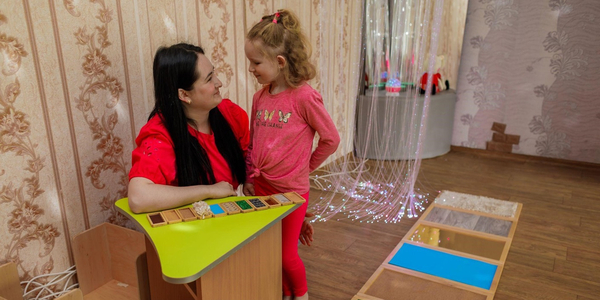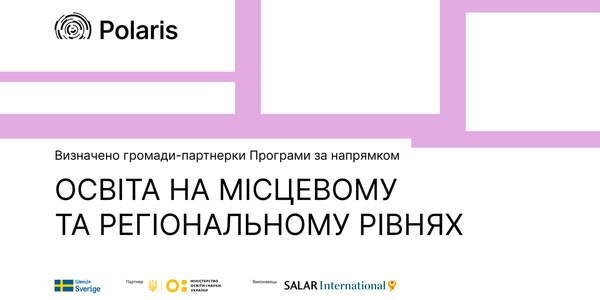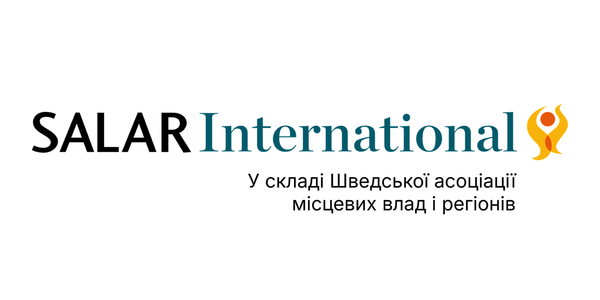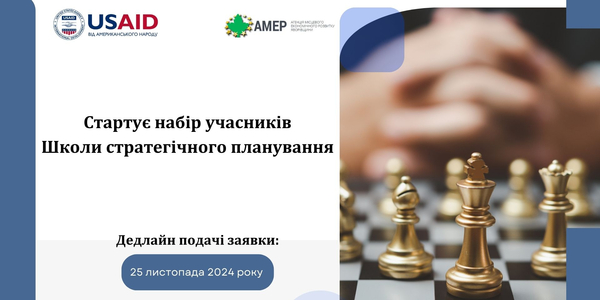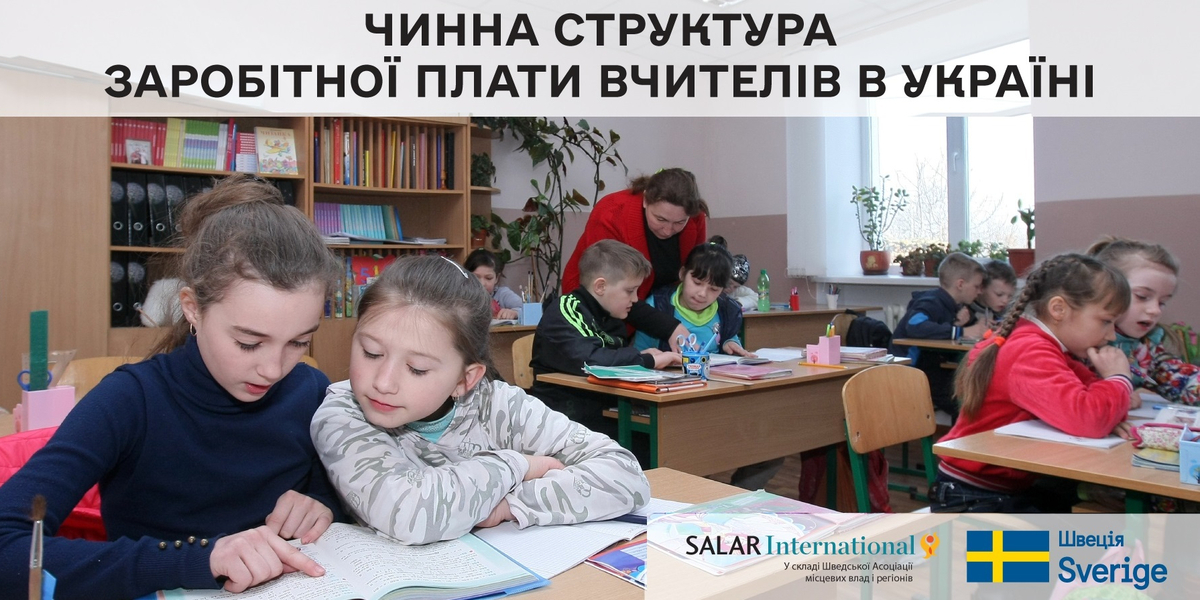
1. Teacher salaries paid today
2. Teacher salaries according to Decree Nr 822
Legal acts cited in the Short Note
Reform of teacher salaries is one of main policy priorities of the new Minister of Education and Science of Ukraine, Mr. Oksen Lisoviy. This is planned as a major reform, which will significantly increase salaries of teachers working in Ukrainian secondary schools. Today these salaries are very low, despite the guaranties stated in the Law on Education, art. 61. These guarantees remain unfulfilled.
It is clear that any comprehensive reform of teacher salaries needs to begin with a clear statement of what is wrong in the current system and how these deficiencies should be addressed. Besides low level of teacher salaries, one of arguments often made is that the current system is excessively complicated. On the other hand, there are also arguments to the contrary. There was no independent review and assessment of teacher remuneration in Ukraine, making the public disputes more difficult. The present note tries to briefly describe how teachers are paid in Ukraine today, without providing a comprehensive review and empirical data.
Today, two current systems of teacher remuneration in Ukraine exist: the system used to pay teacher salaries across the country, defined in multiple decrees of the Cabinet of Ministers of Ukraine (CMU), recalled below, and the new, never implemented system, embodied in Decree Nr 822 of CMU of July 10, 2019. Indeed, meeting the guaranties of the Law on Education was one of primary reasons for adopting Decree Nr 822. However, the costs of fully implementing this decree were so high that year after year, entry of this decree into practice was postponed. For this reason, discussion of the complexity of current system of teacher remuneration should include both these systems.
In the present Short Note 150 we review both current systems of teacher remuneration in Ukraine, namely one used in practice (section 1) and one which was adopted but not implemented (section 2). In the final section we provide some conclusions, the main of which is that both these systems of teacher remuneration are quite similar, very complex and non-transparent. In the Short Note we do not address the key issue of the Stavka system, which is that the salary depends not on individual teacher contract, but on actual number of lessons per week, which may change from school year to school year, allocated to the teacher by the school principal.
Present Short Note is a continuation of analytical support to the Ministry of Education and Science of Ukraine (MES) provided by the by Swedish-Ukrainian project “Support to Decentralization in Ukraine” (SDU). SDU experts have prepared and submitted several policy papers addressing system of teacher remuneration in Ukraine, SN 111 on policy options for increasing teacher salaries (July 2019), SN 115 on strategic questions regarding teacher salaries in Ukraine (November 2019), SN 141 on consequences of requirements of the law regarding teacher salaries (March 2023), SN 143, SN 146 and SN 149 on possible reform of teacher salaries (April, May 2023). Further, in 2021 SDU project published a monograph Paying the Teachers. Three Case Studies of Reforming National Systems of Teacher Remuneration in Eastern Europe (covering experience of Estonia, Lithuania and Poland).
Table 1. Acronyms used in the Short Note
|
CMU
|
Cabinet of Ministers of Ukraine
|
|
MES
|
Ministry of Education and Science of Ukraine
|
|
SDU
|
Swedish-Ukrainian project “Support to Decentralization in Ukraine”
|
|
USC
|
Unified Salary Scale
|
1. Teacher salaries paid today
Teacher salaries are regulated in the Unified Salary Scale (USC, Єдина тарифна сітка) used in Ukraine for different categories of public employees, as regulated by Decree Nr 1298 of CMU of August 30, 2002 (with later changes). The decree was amended repeatedly every year since then (with the exception of 2004), with up to 16 amendments in one year (in 2016). Current version of the decree was adopted on May 2, 2023. USC defines the scale of 25 salary levels (тарифний розряд) to which staff in public institutions may belong, and to each salary level it associates a salary coefficient (тарифний коефіцієнт), ranging from 1 for the first salary level up to 4.51 for the highest salary level. The basic salary (посадовий оклад) of staff belonging to first salary level is determined in Decree Nr 29 of CMU of January 20, 2021. The plans to increase it in September 2022 were postponed due to Russian aggression, so it remained the same since then. For completeness we note that until 2020 the basic salary of first salary level was equal to the survival minimum of persons able to work, determined every year in the budget law. The basic salary of staff belonging to remaining salary levels is obtained by multiplying the respective salary coefficient by the basic salary of staff belonging to first salary level.
Teachers belong to salary levels based on their professional category. There are four groups of teachers: without a category, with first category, with second category, and with higher category. Teachers belong to salary levels from 10 to 14, while school principals belong to salary levels from 14 to 18 (Decree Nr 1298, Annex 2). The following Table 1 lists salary coefficient for selected salary levels relevant for teachers:
Table 2. Selected salary coefficient relevant for teachers and school principals (current system)
|
Salary level
|
Salary coefficient
|
|
Level 10
|
1,82
|
|
Level 14
|
2,42
|
|
Level 16
|
2,79
|
|
Level 18
|
3,21
|
In addition to the basic salary, the system also includes:
- Increases of the basic salary (підвищення),
- Supplements to the basic salary (доплати),
- Add-ons (надбавки).
There is no legal act in Ukraine which specifies the meaning and use of these three elements of the salary. The increase leads to a larger basic salary, which is important because all supplements and add-ons are typically expressed as percentages of the basic salary. Thus an increase of 30% and an add-on of 20% lead to final salary at the level of 132% of the original basic salary, not 130%. Increases are typically allocated for work in difficult conditions, depending on type of school. Supplements are typically allocated for some additional work, such as class tutorship or correction of homework. Add-ons are mainly for honorary titles, for performing work very well, for years of service and for prestige of teaching profession.
Increases, supplements, and add-ons are defined in different laws and decrees of CMU, some of them depend on the profession. Below, we focus only on those elements which are applicable to teachers (but not necessarily only to teachers). We begin with Decree Nr 1298 of CMU of August 30, 2002, and Decree Nr 648 of August 11, 1995, which apply to all staff remunerated according to Unified Salary Scale. Further decrees apply specifically to pedagogical staff. In several places in the lists below, it is a matter of judgement whether some additional elements should be treated as one or as separate elements, in most cases we decided to treat them as one.
Decree Nr 1298 of CMU of August 30, 2002
The decree defines the following supplements to the basic salary:
- Up to 50% for
- executing responsibilities of temporarily absent staff,
- combining two positions,
- for extending the area of service or for increasing the volume of performed tasks,
- Up to 33% for scientific title of professor, up to 25% for lower scientific titles,
- 25% for degree of doctor of sciences, 15% for degree of candidate of science, of doctor of philosophy.
The decree also defines the following add-ons to the basic salary:
- 40% for honorary title “national” of Ukraine, of Soviet Union, or of Soviet republics, 20% for honorary title “meriting” of Ukraine, of Soviet Union, or of Soviet republics,
- 20% for sport title “meriting trainer”, 15% for sport title “master of sport of international level”, 10% for sport title “master of sport”,
- Up to 50% for
- high achievements in work,
- executing especially important task (for the period of its execution),
- complexity or intensity of work
- 10% for knowing and using one European foreign language, 15% for knowing and using one Eastern, African, or Finno-Ugric foreign languages, 25% for knowing and using two foreign languages.
Decree Nr 648 of August 11, 1995
The decree defines an increase of 25% for all staff employed in settlements who have been assigned the status of mountain settlement.
Decree Nr 22 of CMU of January 11, 2018
The decree defines an increase of the basic salary of 10% for all pedagogical staff, including all teachers of secondary schools. We note that a year later similar increase of 11% was adopted for scientific-pedagogical staff (Decree of CMU Nr 36 of January 23, 2019).
Decree Nr 1391 of CMU of December 28, 2021
The decree defines the following increases of the basic salary:
- 10% for pedagogical staff of specialized artistic, sport, military or scientific schools,
- 10% for pedagogical staff of gymnasiums and lyceums,
- 10% for pedagogical staff working in dormitories as part of secondary schools,
- 20% for pedagogical staff in schools for children needing special instruction conditions or prolonged treatment, and for orphans and social orphans, in schools located in prisons,
- 25% for pedagogical staff working in special schools,
- 30% for pedagogical staff working in dormitories of schools for special needs students, orphans and social orphans,
- 5% for principals of schools with over 1000 students for every 700 students above 1000,
- 15% for teachers who through attestation received the title “teacher methodist” or “educator-methodist”,
- 10% for pedagogical staff, who through attestation received the title “senior teacher”, “senior educator”, “head of extracurricular group – methodist”, “pedagogue-organizer methodist”, “practical psychologist methodist”,
- 10% for heads of extracurricular groups with the title “national master”,
- 10% for teachers and school principals who know a foreign language and use it in schools with strengthened instruction of foreign language,
- 5% for principals of schools organizing groups of prolonged stay,
- 10% for staff who developed and implemented author’s programs, whose more than once had students who participated in national and regional Olympics competitions.
The decree defines the following supplements to the basic salary:
- 20% for class tutors in grades 1 to 4, and 25% for class tutors in grades 5 to 12,
- 15% for correcting homework in grades 1 to 4, 10% for correcting homework in foreign languages for grades 5 to 12, 15% for correcting homework in mathematics for grades 12, 20% for correcting homework in mother tongue for grades 5 to 12,
- 10% to 15% for pedagogical staff for managing subject cabinets, laboratories, sport halls, 15% to 20% for managing IT laboratories, 25% for managing a dormitory, a satellite school (if such unit does not have a principal), 10% for managing sections of evening and remote instruction, 5% to 10% for managing a library (if no librarian appointed),
- 10% to 15% for leading a subject commission or a methodical commission,
- 25% for teachers managing schools with less than 20 student (if no principal appointed),
- 25% for school principals for managing work of evening and remote instruction,
- 20% for school principals of schools providing education of special needs students which organized at least 3 inclusive classes, 20% for deputy principals of these schools responsible for teaching special needs students,
- 20% for teachers and assistant educators working in inclusive classes,
- 10% for teachers of sport in schools with between 10 and 19 classes, 20% for teachers of sport in schools with between 20 and 29 classes, between 20% and 40% for teachers of sport in schools with 30 classes or more,
- 30% for teachers of extracurricular sport activities for orphans and social orphans,
- up to 20% for experienced teachers undertaking the duty of teacher-mentor,
- 20% for teachers who passed certification,
- 10% to 15% for teachers and other pedagogical staff who have been assigned to service IT technology in schools with IT laboratories,
- 10% for teachers and other pedagogical staff who have been assigned responsibilities for accounting or for school website.
Supplements 9 and 10 above are also defined in Law on Education and Law on Complete Secondary Education respectively.
Decree Nr 78 of CMU of January 31, 2001
The decree defines the add-on for years of work of pedagogical staff, namely 30% for over 20 years of work, 20% for over 10 years of work, 10% for over 3 years of work. This add-on is valid exclusively for pedagogical and scientific-pedagogical employees of educational institutions.
Decree Nr 373 of CMU of March 23, 2011
The decree defines the add-on for prestige of work of pedagogical staff, at the level of from 5% to 25% of basic salary.
The following Table 2 provides summary of additional elements of teacher salary, broken by type and by legal basis:
Table 3. Number of additional element of teacher salaries by type and by legal act (current system)
|
Decree of CMU
|
Number of additional elements
|
|||
|
Increases
|
Supplements
|
Add-ons
|
Total
|
|
|
Nr 1298 of August 30, 2002
|
|
3
|
4
|
7
|
|
Nr 22 of January 11, 2018
|
1
|
|
|
1
|
|
Nr 648 of August 11, 1995
|
1
|
|
|
1
|
|
Nr 1391 of December 28, 2021
|
13
|
14
|
|
27
|
|
Nr 78 of January 31, 2001
|
|
|
1
|
1
|
|
Nr 373 of March 23, 2011
|
|
|
1
|
1
|
|
Total
|
15
|
17
|
6
|
38
|
Altogether, legislation defines 38 additional elements of teachers, besides the basic salary. 36 of these elements apply to all staff employed under Unified Salary Scale. Nearly half of all the additional elements are supplements.
It is also useful to remember that legislation foresees additional increases for pedagogical staff working in specific educational institutions, such as Junior Academy of Sciences (Decree of CMU Nr 304 of April 25, 2018) or in specialized schools for young sportsmen and sportswomen (Decree of CMU Nr 755 of August 14, 2019). We do not list and take into account these additional elements.
Because of continuous changes in conditions of teaching, and of constant improvements of technology used by schools, all these additional elements of teacher salaries should in theory be reviewed and adjusted regularly. This would make the system even more complex and unstable, of course. This analytical work is not undertaken by MES, in part because if the analysis would imply that some increases, supplements, or add-ons are relatively too high and should be reduced, implementation of such adjustments would be politically difficult.
2. Teacher salaries according to Decree Nr 822
Decree Nr 822 of CMU of CMU of July 10, 2019 was adopted with the specific goal of meeting the guaranties of minimum values of basic salary of teachers, as stated in art. 61 of Law on Education. It defines basic salary (посадовий оклад) of all positions in pedagogical and scientific institutions in Ukraine, by providing for each a salary coefficient, similar to salary coefficient of Unified Salary Scale. Exactly as was the case in USC in 2019, basic salary if obtained by multiplying the salary coefficient and the survival minimum (we discuss in previous section that since 2021 the link of basic salaries and the survival minimum in USC was discontinued, such a change will likely be reflected also in Decree 822 if it is adopted). However, Decree 822 does not use the salary levels as defined in the Unified Salary Scale, instead it assigns the salary coefficient to each position. This means that despite some similarities, Decree 822 removes all pedagogical and scientific staff from the Unified Salary Scale.
Salary coefficients are provided separately for pedagogical staff (mainly secondary and professional schools), for scientific-pedagogical staff (higher education institutions) and for scientific staff (science institutions). For each group, many positions are listed and assigned a salary coefficient. Table 3 lists salary coefficients applied to teachers and provides number of positions to which they apply.
Table 4. Salary coefficients and number of positions for pedagogical staff (Decree 822)
|
Salary coefficient
|
Number of positions
|
|
4
|
23
|
|
4,4
|
19
|
|
4,84
|
10
|
|
5,32
|
16
|
|
7,2
|
5
|
|
8
|
11
|
|
12
|
3
|
It is worth noting in Table 3 that salary coefficients for pedagogical staff stated in Decree 822 range from 4 to 12. This is much higher than current salary coefficients applicable to teachers and school directors, as Table 1 indicates. This demonstrates clear motivation of Decree 822 to significantly increase the salaries of teachers. At the same time, by inclusion of scientific-pedagogical staff (salary coefficients ranging from 5 to 12,96) and scientific staff (salary coefficients ranging from 4 to 10,37), the decree attempts to preserve some balance between different categories of staff of education institutions, from preschools to universities.
Altogether, 87 positions of pedagogical staff are listed in Decree 822, and assigned specific salary coefficients. This is much more detailed than assignment of salary coefficients to teachers related to their category. In particular, all teachers with higher category are assigned salary coefficient 5,32 while all teacher with first, second or without category are assigned salary coefficient 4,84. This represents 10% increase of basic salary when a teacher receives higher category, less that the currently used progression shown in Table 2. In particular, it is not clear why obtaining second or first category is not rewarded in an increase of the salary coefficient. Similarly, for a number of positions in preschools, all staff with first, second or without category have the same salary coefficient, but that coefficient increase by 10% if the staff receives higher category.
Clearly, Decree 822 attempts to assess the relative difficulty of all possible types of positions of pedagogical staff and to reward them appropriately by providing differentiated salaries. However, any attempt to compare the work of instructor of touring (інструктор з туризму) and head of extracurricular group (керівник гуртка,) at the national level will be open to discussion, because in individual schools their work may be quite incomparable.
We should add that the list of pedagogical and scientific-pedagogical positions is determined in the Decree of CMU Nr 963 of June 14, 2000 (with later changes); the decree was regularly updated, with the most recent change adopted in August 2022. This list contains just the names of the positions, without any description of the requirements or the responsibilities associated with the position, so it is rather bureaucratic. As responsibilities of teachers and other pedagogical staff change, such changes would have to be reflected in both Decree 963 and in Decree 822, if it ever enters force.
Some of the increases of the basic salary in the current system were changed into different salary coefficients in Decree 822. For example, both system recognize that managing a large school is a more complex work than managing a small school. In the current system, this is reflected in the increase of 5% for principals of schools with over 1000 students for every 700 students. Decree 822 determines the salary coefficient of principals of secondary schools based on the number of enrolled students according to Table 5:
Table 5. Salary coefficients of school principals based on school enrollment (Decree 822)
|
Number of enrolled students
|
Salary coefficient of school principal
|
|
Up to 300
|
7,2
|
|
Between 300 and 1000
|
8
|
|
Over 1000
|
12
|
The progression of salary of school principal based on school enrollment under Decree 822 is much steeper than in the system currently used in Ukraine. Especially amazing is 50% increase in case the school surpasses the limit of 1000 students. It seems quite difficult to justify such an increase. Given current demographic trends in Ukraine, one may expect to see many school directors whose salary becomes drastically smaller when the number of students decreases.
It is also surprising that director of a preschool or of institution of extracurricular education, with a salary coefficient 8, will have higher basic salary than principal of secondary school with under 300 students. Since there are many preschools with less than 150 students, the higher basic salary of their directors does not seem to be justified.
The analysis of the complexity of work for all pedagogical positions, which resulted in salary coefficients reported in Table 4, was conducted by MES back in 2019. School work has changed in many ways since then, in part in response to the Covid pandemic and to the aggression by Russian Federation. This means that if there are plans to implement Decree 822, the results of this analysis need to be reviewed and discussed today.
In parallel to the currently used system of teacher remuneration, Decree 822 also defines a number of additional elements of the salary, besides the basic salary. There are three groups of increases, seven groups of supplements, and three groups of add-ons. These very closely follow the supplements and add-ons for teachers applied today (described in the previous section), with the exceptions. Most notable omissions are lack of increase of 10% for all pedagogical staff, lack of add-on for prestige of professional teachers, and lack of supplement for IT laboratories. The first and second of these were introduced to increase somewhat teacher salaries, so with massive increase of salary coefficients they are no longer needed. In many places, it refers to legal acts which need to be adopted by MES. This is surprising, because as review of the current system shows, teacher salaries are regulated in decrees of Cabinet of Ministers, not in Orders of the Minister of Education and Science.
The complexity of additional elements of teacher salary under Decree 822 is smaller than in the system currently used. However, this is at least partially offset by increased complexity of the rules governing the basic salary (through salary coefficients), as example of salary coefficients for school directors reported in Table 5 indicate.
The decree is curiously incomplete. It does not include transitory clauses, which would define the stages and order of its implementation. Even more seriously, it does not include a list of legal acts, such as different decrees cited in previous section, which need to be revoked and removed from the legal system. To give just two simple examples, both Decree Nr 22 of CMU of January 11, 2018 (increase of 10%) and Decree Nr 373 of CMU of March 23, 2011 (add-on for prestige of teacher profession) should be revoked. The decree should also be complemented with a list of amendments to other legal acts, necessary for proper implementation of the scheme of teacher remuneration.
This shows that the decree, as it stands now, cannot be adopted and made obligatory. It needs significant prior legal work, including:
- Determination of transitory clauses, and defining proper implementation process,
- Listing all decrees and other legal acts which will be revoked,
- Listing all required amendments to other legal acts, including laws, in particular amendments which will specify that teacher salaries are no longer governed by USC,
- Adoption by MES of all required legislative acts, specifying the order of assessment of all increases, supplements, and add-ons.
3. Conclusions
The analysis of two current national systems of teacher remuneration in Ukraine, one based on Unified Salary Scale and obligatory today, and another one based on Decree 822 and still not in force, conducted in section 1 and section 2 respectively, allows us to formulate several conclusions.
The following conclusions about the current system are based on the discussion of section 1:
- The system presently in use is very complicated and unclear, it includes multiple increases, supplements, and add-ons to the basic salary.
- The basic salary is defined by salary coefficients, which are used to multiply the basic salary of staff belonging to first salary level. Since January 2021 this basic salary was not adjusted, due to conditions of war.
- The current system uses nearly forty increases, supplements, and add-ons to the basic salary. This makes the system highly complex.
- These additional elements of teacher salary attempt to assess and reflect the difficulty of different tasks performed by teachers, such as correcting homework, using a foreign language, or managing IT laboratory. They are not regularly reviewed and adjusted.
- In particular, the use of increases, especially of 10% for all pedagogical staff, violates the logic of Uniform Salary Scale and indicates that this logic is no longer appropriate for Ukrainian education.
Regarding the system embodied in Decree 822, we can conclude the following:
- Decree 822 acknowledges the fact that the logic of Unified Salary Scale is no longer appropriate for Ukrainian education and removes teachers from USC, without however saying this openly.
- Decree 822 retains the basic principles of the Unified Salary Scale, namely that the basic salary is the result of multiplication of survival minimum by a salary coefficient (as was the case in USC back in 2019).
- Decree 822 assigns specific salary coefficient to every position of pedagogical or scientific-pedagogical staff. The resulting differences of basic salaries are sometimes surprising.
- Decree 822 repeats many of the increases, supplements, and add-ons to the basic salary, with a few exceptions.
- Moreover, Decree 822 is legally incomplete, and significant preparatory work is needed before it can be implemented in practice.
When comparing the two systems, we observe that they are remarkably similar:
- Both regulations of teacher salaries rely on the Stavka system, which remains the key weakness of the present system.
- Both regulations use the basic salary and multiple increase, supplements, and add-ons.
The two important differences of the two systems is that Decree 822 removes teachers from the Unified Salary Scale and that it considerably increases teacher salaries in Ukraine, by increasing the salary coefficients.
Legal acts cited in the Short Note
Закон України від 05.09.2017 № 2145-VIII "Про освіту", https://zakon.rada.gov.ua/laws/show/2145-19#Text
Закон України від 16.01.2020 № 463-IX "Про повну загальну середню освіту", https://zakon.rada.gov.ua/laws/show/463-20#Text
Постанова КМУ від 11 серпня 1995 р. № 648 Про умови оплати праці осіб, які працюють в гірських районах, https://zakon.rada.gov.ua/laws/show/648-95-%D0%BF/print
Постанова КМУ від 14 червня 2000 р. № 963 " Про затвердження переліку посад педагогічних та науково-педагогічних працівників", https://zakon.rada.gov.ua/laws/show/963-2000-%D0%BF#Text
Постанова КМУ від 31 січня 2001 р. № 78 "Про реалізацію окремих положень частини першої статті 57 Закону України "Про освіту", частини першої статті 25 Закону України "Про загальну середню освіту", частини другої статті 18 і частини першої статті 22 Закону України "Про позашкільну освіту"", https://zakon.rada.gov.ua/laws/show/78-2001-%D0%BF#Text
Постанова КМУ від 30 серпня 2002 р. № 1298 "Про оплату праці працівників на основі Єдиної тарифної сітки розрядів і коефіцієнтів з оплати праці працівників установ, закладів та організацій окремих галузей бюджетної сфери", https://zakon.rada.gov.ua/laws/show/1298-2002-%D0%BF#Text
Постанова КМУ від 23 березня 2011 р. № 373 "Про встановлення надбавки педагогічним працівникам закладів", https://zakon.rada.gov.ua/laws/show/373-2011-%D0%BF#Text
Постанова КМУ від 11 січня 2018 р. № 22 "Про підвищення оплати праці педагогічних працівників", https://zakon.rada.gov.ua/laws/show/22-2018-%D0%BF#Text
Постанова КМУ від 25 квітня 2018 р. № 304 “Деякі питання оплати праці працівників Національного центру “Мала академія наук України””, https://zakon.rada.gov.ua/laws/show/304-2018-%D0%BF#Text
Постанова КМУ від 23 січня 2019 р. № 36 Про підвищення посадових окладів науково-педагогічних працівників, https://zakon.rada.gov.ua/laws/show/36-2019-%D0%BF#Text
Постанова КМУ від 10 липня 2019 р. № 822 "Про оплату праці педагогічних, науково-педагогічних та наукових працівників закладів і установ освіти і науки", https://zakon.rada.gov.ua/laws/show/822-2019-%D0%BF#Text
Постанова КМУ від 14 серпня 2019 р. № 755 “Деякі питання оплати праці працівників дитячо-юнацьких спортивних шкіл”, https://zakon.rada.gov.ua/laws/show/755-2019-%D0%BF#n5
Постанова КМУ від 20 січня 2021 р. № 29 "Деякі питання оплати праці працівників установ, закладів таорганізацій окремих галузей бюджетної сфери", https://zakon.rada.gov.ua/laws/show/29-2021-%D0%BF#Text
Постанова КМУ від 28 грудня 2021 р. № 1391 "Деякі питання встановлення підвищень посадових окладів (ставок заробітної плати) та доплат за окремі види педагогічної діяльності у державних і комунальних закладах та установах освіти", https://zakon.rada.gov.ua/laws/show/1391-2021-%D0%BF#n16
